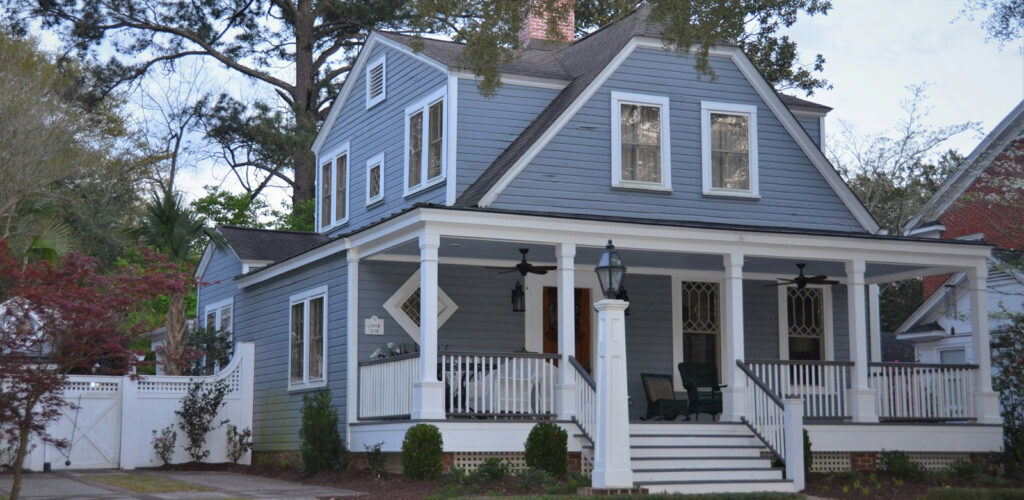How Long After Power Washing Can You Paint?
Key Takeaways
How long different exterior surfaces (wood, stucco, vinyl, and more) need to dry after power washing
Why painting too soon can cause bubbling, peeling, and early paint failure
How Southern Oregon’s climate affects drying times and what to watch for
Simple ways to check if your home is truly ready for fresh paint
Painting your home after power washing is one of the most important steps in maintaining a beautiful, long-lasting exterior. But rushing into painting before surfaces are fully dry can lead to costly mistakes. Homeowners often ask: How long after power washing can you paint? The answer depends on your siding material, weather conditions, and how thoroughly the surface dries.
In this guide, we’ll break down typical drying times, why patience matters, and tips to help you determine when your home is truly ready for fresh paint.
Why You Should Wait After Power Washing
Even when a surface looks dry on the outside, hidden moisture can remain trapped inside wood or seep into cracks. If paint is applied too soon:
- The finish may bubble or peel prematurely
- Moisture can get trapped and cause mildew or rot
- You’ll likely need to repaint much sooner, adding unnecessary cost
Allowing enough time for drying ensures your paint bonds properly, creating a smooth, even finish that protects your home for years.
Typical Drying Times by Surface
Every material reacts differently to power washing. Factors like porosity, airflow, and temperature all impact drying time. Here’s what you should know for common surfaces.
Wood Siding, Decks, and Fences
Wood is one of the most porous building materials, meaning it soaks up water quickly.
- Typically requires 48–72 hours of drying time
- Shaded or north-facing areas in Southern Oregon may need longer
- Direct sun and airflow help wood dry faster
Stucco or Masonry
Concrete, stucco, and brick hold moisture deep in their pores.
- Expect at least 3 days of drying time
- After heavy rain or in cool, damp weather, this may stretch to 4–5 days
- Look for dark patches as a sign of lingering dampness
Vinyl and Aluminum Siding
These surfaces don’t absorb water, so after pressure washing the vinyl siding, drying happens quickly.
- Often ready to paint within 24 hours
- Still check seams, joints, and shaded areas for trapped moisture before you paint vinyl siding.
How Climate Affects Drying After Power Washing
Southern Oregon’s climate adds unique challenges when planning painting projects. Even after power washing, drying times vary widely.
Rainy Seasons
During the fall and winter, higher humidity and frequent rainfall result in longer drying times. Always budget extra days before painting.
Shady Areas
Homes under Douglas firs, cedars, or near the Rogue River often deal with moss and algae buildup. These shady areas dry more slowly than spots exposed to the sun.
Hot, Dry Summers
While summer sun speeds up surface drying, it can also cause “flash drying,” where the outside looks dry but inner moisture remains. Allowing at least two full days is still wise.
How to Tell If the Surface Is Ready to Paint
Rather than relying only on the clock, it’s smart to check whether your home is truly dry before painting.
The Moisture Test
Press a paper towel or dry cloth against the surface. If it comes away damp, wait longer.
The Visual Check
Dark streaks, uneven patches, or a cool-to-the-touch feel often indicate lingering moisture.
Professional Tools
Experienced painters use moisture meters to measure water content inside wood and siding, ensuring surfaces are safe to coat.
Can You Speed Up Drying After Power Washing?
Homeowners sometimes wonder if they can cut down the wait time. While nothing replaces patience, a few steps can help.
Improve Airflow
Use box fans or open space around the home to encourage circulation.
Choose a Dry Weather Window
Plan power washing for a stretch of sunny, dry days. This makes drying more predictable.
Avoid Shortcuts
Don’t apply paint while surfaces are damp. Rushing the process can reduce the lifespan of your new paint job by years.
How Long After Power Washing Can You Paint
If you’re unsure, follow the rule of patience.
- Minimum wait: 24 hours for non-porous surfaces, 48 hours for wood
- Standard wait: 2–3 days in mild, dry weather
- Extended wait: 3–4 days in shady, damp, or cool conditions common in Grants Pass and Medford
Hiring a professional painter ensures the right call is made based on both material and local climate. Experienced crews know how to use tools and timing to get the longest-lasting results.
Ready to Paint After Power Washing? Hire the Experts
Timing matters when it comes to painting after a power wash—and getting it wrong can mean wasted time, money, and effort. At Pacific Home Painting, we know how to balance drying times, weather conditions, and proper prep to deliver long-lasting results.
Whether your home needs professional house painting or pressure washing, we’re here to help. Serving homeowners across Southern Oregon, we combine experience, premium materials, and careful attention to detail so your house looks its best for years to come.
Contact us today for a free estimate and let us handle the hard work so you can enjoy a beautifully finished home.
FAQs
No. Surfaces need time to dry fully. Painting the same day traps moisture, leading to peeling and bubbling.
Expect paint to fail early, often within the first year. This means costly repainting much sooner than necessary.
Yes. Acrylic latex is somewhat more forgiving than oil-based paint, but both require dry surfaces for proper adhesion.
You can DIY, but professionals have moisture meters and local knowledge to make sure timing is perfect—especially important in Southern Oregon’s variable climate.
